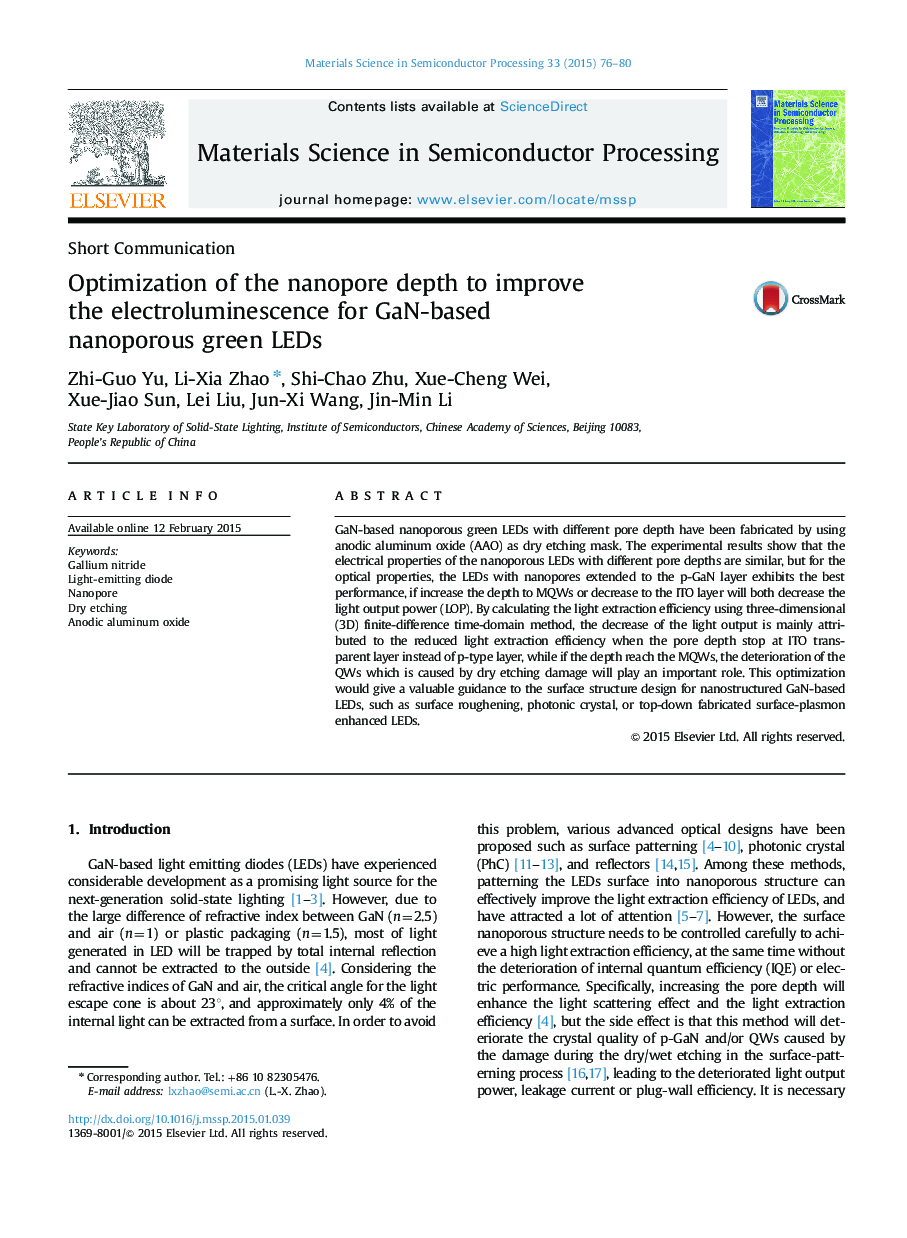| Article ID | Journal | Published Year | Pages | File Type |
|---|---|---|---|---|
| 729161 | Materials Science in Semiconductor Processing | 2015 | 5 Pages |
GaN-based nanoporous green LEDs with different pore depth have been fabricated by using anodic aluminum oxide (AAO) as dry etching mask. The experimental results show that the electrical properties of the nanoporous LEDs with different pore depths are similar, but for the optical properties, the LEDs with nanopores extended to the p-GaN layer exhibits the best performance, if increase the depth to MQWs or decrease to the ITO layer will both decrease the light output power (LOP). By calculating the light extraction efficiency using three-dimensional (3D) finite-difference time-domain method, the decrease of the light output is mainly attributed to the reduced light extraction efficiency when the pore depth stop at ITO transparent layer instead of p-type layer, while if the depth reach the MQWs, the deterioration of the QWs which is caused by dry etching damage will play an important role. This optimization would give a valuable guidance to the surface structure design for nanostructured GaN-based LEDs, such as surface roughening, photonic crystal, or top-down fabricated surface-plasmon enhanced LEDs.
